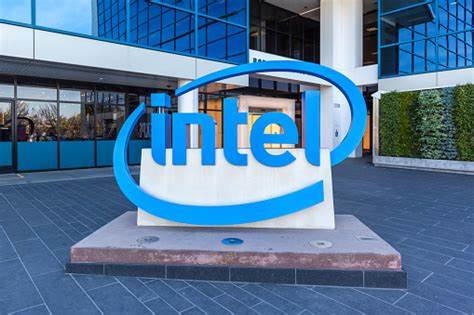The anticipation surrounding Intel’s first-quarter 2024 earnings announcement is palpable, especially given the company’s recent organizational restructuring, which separates Intel Products from Intel Foundry. This shift in reporting structure has piqued the interest of investors and analysts alike, as they seek to understand how this change will impact Intel’s financial performance and strategic direction.
Despite this significant organizational change, Stacy Rasgon, an analyst at Bernstein, has made only minor adjustments to his forecasts for Intel’s first quarter. His projections remain relatively steady, with revenue expected to reach $12.75 billion and adjusted earnings per share (EPS) estimated at $0.13. These figures closely align with the consensus estimates among analysts, reflecting a consensus revenue forecast of $12.72 billion and an EPS estimate of $0.13.
Looking ahead to the second quarter, Rasgon’s projections see a slight improvement, with revenue expected to increase to $13.5 billion and adjusted EPS projected to reach $0.23. However, these estimates still fall slightly below the consensus forecasts of $13.6 billion in revenue and $0.24 in adjusted EPS, respectively.
Rasgon’s analysis takes into account various factors influencing Intel’s performance, including the state of the PC market. While Rasgon anticipates a modest year-over-year growth in the PC market for the first quarter, he cautions against over-optimism, noting that the growth appears somewhat subdued and may be overshadowed by concerns about overshipment of CPUs in the previous quarter.
Furthermore, Rasgon expresses reservations about the health of Intel’s server CPU segment, highlighting continued share losses and a shift in spending towards GPUs. Despite recent announcements about the performance of Gaudi 3, Rasgon believes that Intel’s narrative surrounding AI still lacks depth and clarity, which may pose challenges for the company in this rapidly evolving space.
On the other hand, Rasgon acknowledges some positive developments, such as the expectation that losses in Intel’s foundry business will peak in the current year and gradually improve thereafter. This indicates that Intel’s turnaround efforts in this segment are gaining traction, albeit slowly.
In light of these insights, Rasgon suggests that investors may adopt a cautious approach, refraining from making significant moves until there is more clarity on Intel’s performance and strategic direction. He rates Intel shares as Market-Perform (Neutral) with a price target of $42, implying a potential upside of approximately 22% from current levels.
While Rasgon’s analysis provides valuable insights, investors should conduct their own research and analysis before making any investment decisions, especially in a dynamic and rapidly changing market environment like the semiconductor industry.
